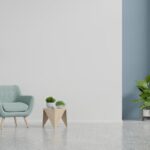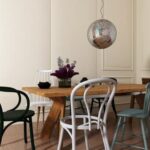Are you wondering how to decorate a tri-level home? Tri-level homes are known for their unique layout, with multiple levels that offer both challenges and opportunities when it comes to interior design. From choosing the right color palette for each level to maximizing functionality and creating cohesive design elements throughout the home, decorating a tri-level home requires careful consideration and planning.
One of the key aspects of decorating a tri-level home is understanding its layout. Each level offers its own distinct space and purpose, from living and entertaining areas on the main level to private bedrooms and bathrooms on the upper level, as well as additional living or recreational spaces on the lower level.
This layout presents a chance to create different atmospheres and design aesthetics within one home, but it also requires thoughtful coordination to ensure a sense of continuity and flow throughout.
In this article, we will explore various tips and strategies for decorating a tri-level home, including choosing the right color palette for each level, utilizing space effectively, creating cohesive design elements, arranging furniture, adding visual interest with lighting and decor, incorporating outdoor spaces into your design plan, maintaining flow between levels, and finding storage solutions for each area.
Whether you’re a new homeowner or looking to refresh your current tri-level property’s interior design, these insights will help you make the most of your unique home.
Choosing the Right Color Palette for Each Level
When decorating a tri-level home, it’s important to consider the unique layout of each level when choosing a color palette. The goal is to create a cohesive and harmonious flow throughout the home while also differentiating between the distinct areas.
For the lower level, which typically includes the living room, it’s important to choose warm and inviting colors that promote relaxation and comfort. Consider rich earthy tones like deep greens, warm browns, or even a deep navy blue for an intimate and cozy feel.
The main or middle level, where the kitchen and dining area are often located, can benefit from brighter and more open colors. Soft neutrals like light greys, whites, or beige can help create an airy and spacious atmosphere in these communal areas.
Finally, for the upper level where the bedrooms are usually situated, opt for calming and soothing colors that promote rest and relaxation. Soft blues, pale greens, or gentle pastel shades can create a tranquil environment perfect for unwinding at the end of a long day.
It’s also important to maintain continuity throughout the levels by using complementary colors or accent hues that tie each space together. This helps to create a sense of flow and unity within the home. Ultimately, choosing the right color palette for each level is key in creating a well-balanced and visually appealing tri-level home.
| Level | Ideal Color Palette |
|---|---|
| Lower Level (Living Room) | Deep greens, warm browns, deep navy blue |
| Main/Middle Level (Kitchen & Dining) | Light greys, whites, beige |
| Upper Level (Bedrooms) | Soft blues, pale greens, gentle pastel shades |
Utilizing the Space
When decorating a tri-level home, it’s essential to make the most of each level’s functionality. With multiple levels available, there are various ways to optimize the space in order to accommodate different activities and lifestyles. Here are some tips for maximizing the functionality of each level:
1. Define the purpose of each level: Start by determining what activities or functions will take place on each floor. For example, the lower level might be designated as a recreation or entertainment area, while the main floor could serve as the primary living and gathering space. On the upper level, bedrooms and private areas can be situated.
2. Create designated zones: Once you’ve established the purpose of each level, consider creating specific zones within those areas to delineate different functions. For instance, within the main living area, you could have a seating zone for conversation and another area designated for dining.
3. Utilize multi-purpose furniture: In a tri-level home where space might be limited, multi-purpose furniture can be incredibly beneficial. Look for items such as storage ottomans that can double as seating or coffee tables with built-in shelving.
4. Consider built-in storage solutions: With varying levels comes varied opportunities for incorporating built-in storage options that not only maximize space but also add design appeal to your home.
By utilizing these tips and considering the unique layout of your tri-level home, you can ensure that each level serves its intended purpose while still feeling cohesive and interconnected with the rest of your living spaces.
Creating Cohesive Design Elements Throughout the Home
When it comes to decorating a tri-level home, creating cohesive design elements throughout the entire space is essential for achieving a unified and harmonious look. With three distinct levels, it can be challenging to ensure that the design flows seamlessly from one area to the next. However, with the right approach, you can achieve a cohesive and consistent aesthetic throughout your tri-level home.
To begin creating cohesive design elements in your tri-level home, start by establishing a consistent color palette that runs through each level. While you may choose different accent colors for each floor, selecting a main color scheme that ties the entire home together will help maintain continuity. This could mean choosing complementary colors or sticking with variations of the same shade to create a harmonious flow from one level to the next.
In addition to a consistent color palette, incorporating similar design elements such as materials, textures, and patterns can also help tie the spaces together. For example, if you have hardwood floors on one level, consider using similar wood tones or finishes in furniture or decor on the other levels. This will create a sense of cohesion and unity throughout your tri-level home.
Another effective way to achieve cohesive design elements in a tri-level home is to use repeating motifs or thematic elements. Whether it’s artwork, decorative accents, or architectural details, integrating common themes or motifs throughout each level will help create a unified look. This could include using similar art styles or incorporating natural elements like plants or greenery in different areas of the home.
| Tip | Description |
|---|---|
| Consistent Color Palette | Choose a main color scheme that ties all levels together |
| Similar Design Elements | Incorporate materials, textures, and patterns that are consistent across levels |
| Repeating Motifs | Use common themes or motifs throughout each level for unity |
Furniture Placement and Arrangement for Tri-Level Homes
When it comes to decorating a tri-level home, furniture placement and arrangement play a crucial role in creating a cohesive and functional living space. The unique layout of a tri-level home often presents challenges when it comes to deciding where to place furniture and how to arrange it in a way that maximizes the space on each level. Here are some tips for effectively placing and arranging furniture in a tri-level home.
Consider the Flow
One of the key factors to keep in mind when arranging furniture in a tri-level home is the flow of traffic between levels. Since tri-level homes typically have multiple staircases and different living areas on each level, it’s important to ensure that there is an easy flow from one space to another. Avoid placing large pieces of furniture in hallways or at the bottom or top of staircases, as this can impede movement throughout the home.
Scale and Proportion
Another important aspect to consider when arranging furniture in a tri-level home is scale and proportion. Each level may have different ceiling heights, room sizes, and architectural features, so it’s essential to select furniture that fits well within each space. For example, low-profile furniture may work best in lower-ceiling areas, while taller pieces can be utilized in spaces with higher ceilings.
Zoning Different Areas
In a tri-level home, it’s common to have distinct living areas on each level, such as a formal living room on one floor and a cozy family room on another. When arranging furniture, consider zoning different areas for specific purposes. For example, on the lower level where the family room might be located, you can create designated zones for lounging, entertainment, and work by strategically placing sofas, chairs, and tables.
By considering the flow of traffic, scale and proportion of furniture, as well as zoning different areas within the home, you can effectively arrange your furniture in a way that complements the unique layout of your tri-level home while maximizing functionality and style.
Adding Visual Interest With Lighting and Decor
When it comes to decorating a tri-level home, adding visual interest with lighting and decor is essential for creating a cohesive and inviting space. Each level of a tri-level home presents its own unique opportunities for displaying decor and incorporating different lighting elements. Here are some tips for effectively adding visual interest with lighting and decor in a tri-level home:
1. Choose statement lighting fixtures: Incorporating statement lighting fixtures on each level of the home can help define the different spaces and add visual interest. Consider using unique pendant lights, chandeliers, or sconces to create focal points in various areas of the home.
2. Utilize natural light: Take advantage of natural light by strategically placing mirrors to bounce light around the space, or by using sheer window treatments that allow plenty of sunlight to filter through. Natural light can also highlight architectural features of the home, such as vaulted ceilings or interesting angles.
3. Layer your lighting: In addition to overhead lighting, consider adding task lighting and accent lighting to create depth and ambiance in each level of the home. Table lamps, floor lamps, and under-cabinet lighting can all contribute to a layered lighting scheme that adds visual interest.
4. Curate decor that complements each level: Selecting decor pieces that complement the style and layout of each level is key to creating a cohesive design throughout the home. Consider incorporating artwork, textiles, and accessories that reflect the overall aesthetic you want to achieve.
5. Emphasize architectural features: Use decorative lighting techniques to draw attention to architectural features such as staircases, exposed beams, or built-in shelving. Highlighting these elements with well-placed lights can enhance the character and charm of your tri-level home.
By implementing these tips for adding visual interest with lighting and decor in your tri-level home, you can create a welcoming and visually engaging environment that showcases the unique characteristics of each level while maintaining continuity throughout the entire space.
Incorporating the Outdoors
When it comes to decorating a tri-level home, it’s important to not only focus on the interior, but also consider the outdoor spaces. Whether your home has a small balcony, a spacious deck, or a cozy patio, there are plenty of opportunities to extend your design aesthetic to the exterior of your home.
One of the key aspects of decorating outdoor spaces in a tri-level home is to create a seamless transition from one level to another. Consider using similar color schemes and design elements that flow from the interior of your home to the outside areas. This will help create a cohesive look and ensure that your outdoor space feels like an extension of your indoor living areas.
In addition to embracing a cohesive design, it’s important to maximize functionality in your outdoor spaces. If you have multiple levels such as a lower level patio and an upper level deck, think about how each space can serve different purposes.
For example, you might use the lower patio for dining and entertaining, while reserving the upper deck for lounging and relaxation. By thinking strategically about how each outdoor area will be used, you can make the most of your tri-level home’s exterior.
Lastly, don’t overlook the power of lighting and decor in outdoor spaces. Just as you would inside your home, carefully curated lighting and decorative elements can truly enhance the ambiance of your outdoor areas. Consider adding string lights for a cozy touch, or incorporating potted plants and flowers to bring life and color to each level of your outdoor space.
By considering these tips for decorating outdoor spaces in a tri-level home, you can create a beautiful and functional environment that complements the unique layout of your home. Don’t be afraid to get creative with design elements and make each level feel like its own special oasis.
Maintaining a Sense of Flow and Continuity Between Levels
One of the key challenges in decorating a tri-level home is maintaining a sense of flow and continuity between the different levels. Without proper attention to design elements, it’s easy for each level to feel disconnected from the others, creating a disjointed and unharmonious overall look. Follow these tips to ensure that your tri-level home maintains a cohesive and unified feel throughout.
Consistent Flooring
One effective way to create a sense of flow between levels in a tri-level home is to use consistent flooring materials and colors throughout. Whether you opt for hardwood, tile, or carpet, choosing the same flooring for all levels can help tie the spaces together visually.
Color Palette
Another important aspect of creating continuity between levels is your choice of color palette. While each level may have its own distinct style or function, using complementary colors or hues from the same color family can create a harmonious connection between them. Consider using accent colors or accessories that appear on multiple levels to further reinforce this visual link.
Connective Decor Elements
Incorporating connective decor elements such as artwork, mirrors, or lighting fixtures that are repeated throughout different levels can help make the transition between floors feel seamless. These shared decor pieces act as visual cues that tie each level together, creating a more unified look for your tri-level home.
By paying attention to these details, you can ensure that your tri-level home feels cohesive and connected, allowing for a more enjoyable and aesthetically pleasing living environment. With thoughtful design choices and intentional decor placement, you can overcome the potential challenges of maintaining flow and continuity between multiple levels in your home.
Storage Solutions for Each Level of the Home
In conclusion, decorating a tri-level home can present some unique challenges, but with the right approach, it can also be incredibly rewarding. By understanding the layout of the home and making thoughtful choices about color palettes, furniture placement, and lighting, you can create a cohesive and visually appealing design throughout all levels. Additionally, don’t forget to consider outdoor spaces as an extension of your home’s design.
When it comes to storage solutions for each level of the home, it’s important to get creative and maximize space in each area. Consider built-in storage options such as shelves or cabinets to make the most of every nook and cranny. Utilizing multifunctional furniture pieces that offer hidden storage compartments can also help keep each level organized and clutter-free.
Ultimately, decorating a tri-level home is about finding balance and maintaining a sense of flow between each zone. By following these tips and thinking carefully about how to decorate a tri-level home, you can create a beautiful and functional living space that feels cohesive from top to bottom.

I’m thrilled to be your companion on this exciting journey through the world of home decor and design. With a passion for turning houses into homes and a keen eye for the finer details, I’m here to help you transform your living spaces into beautiful, functional, and meaningful havens.





